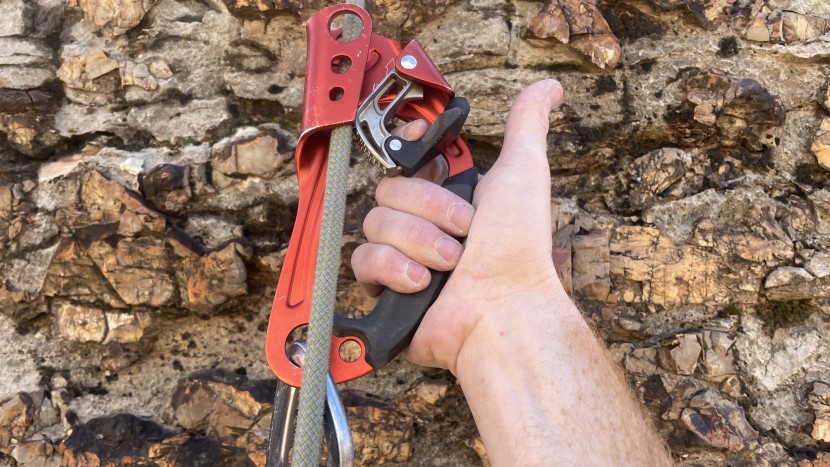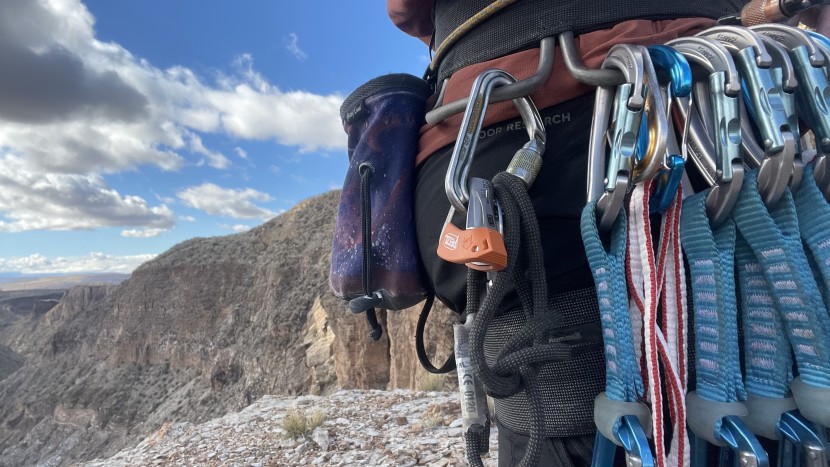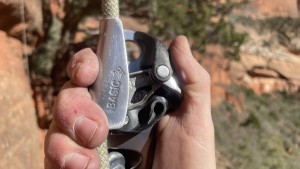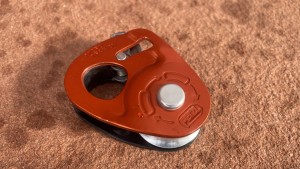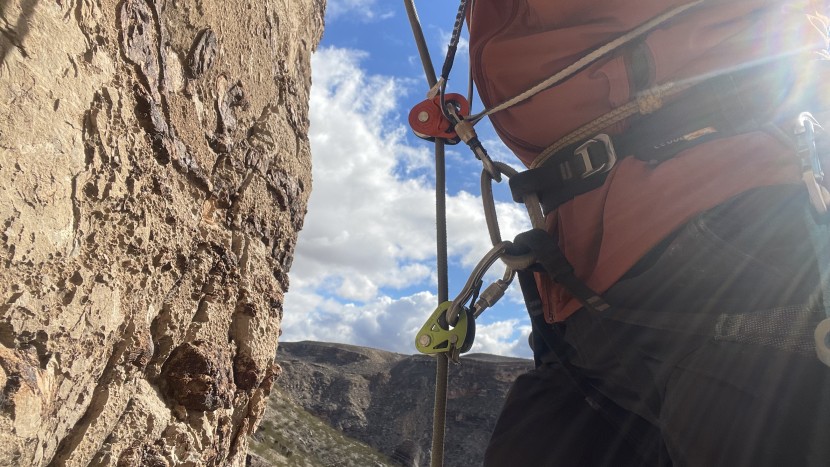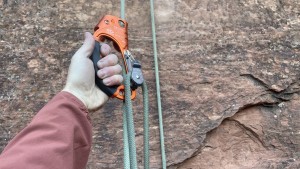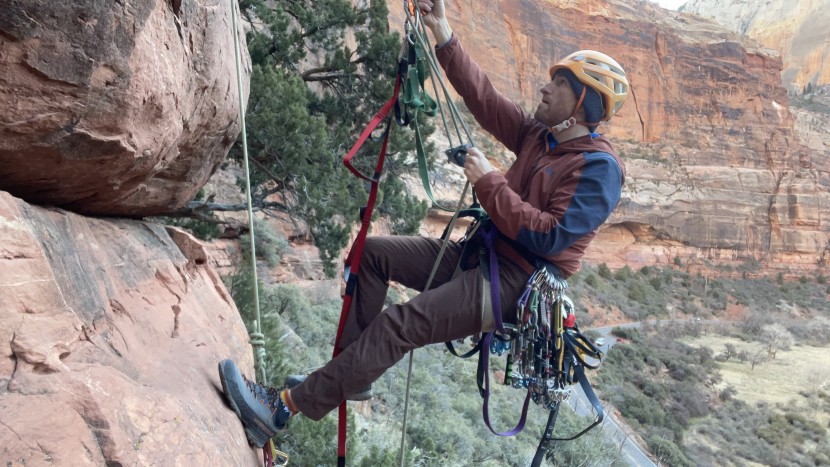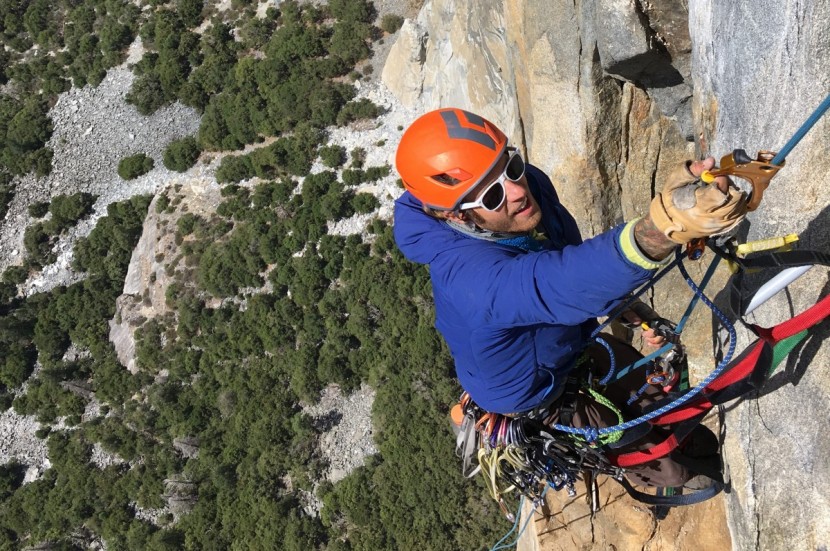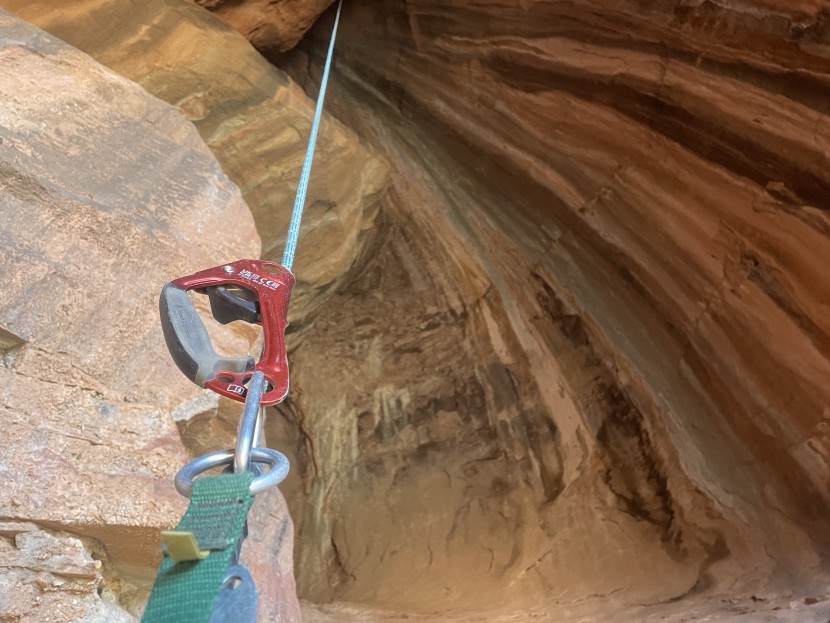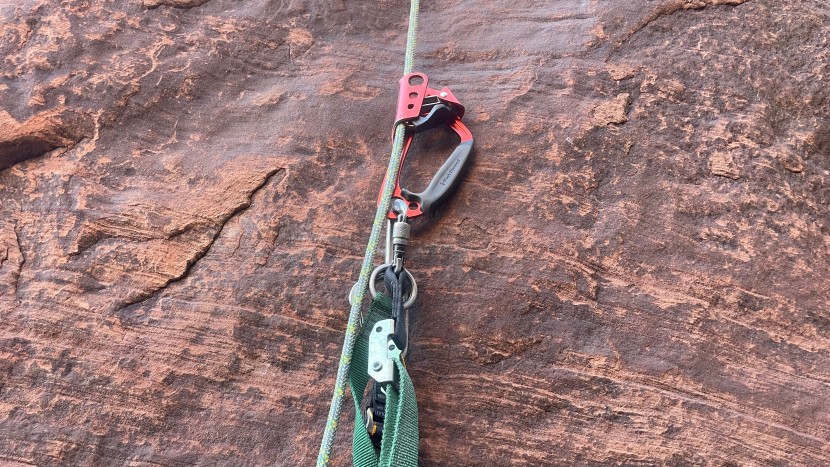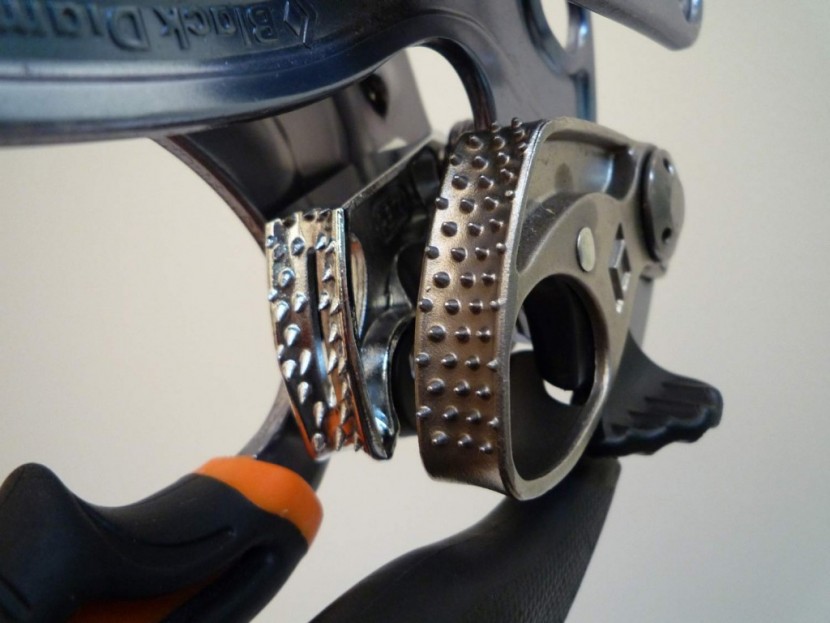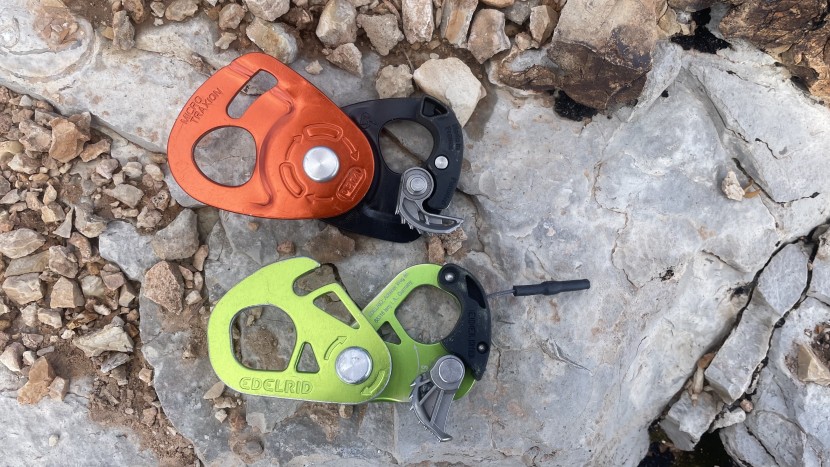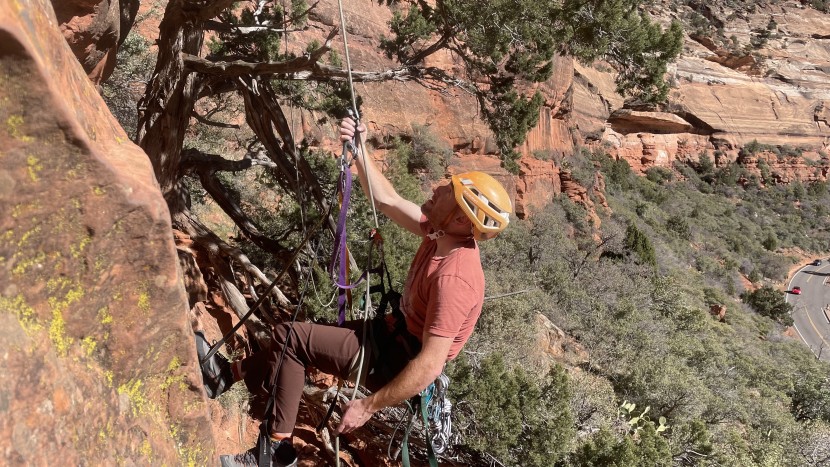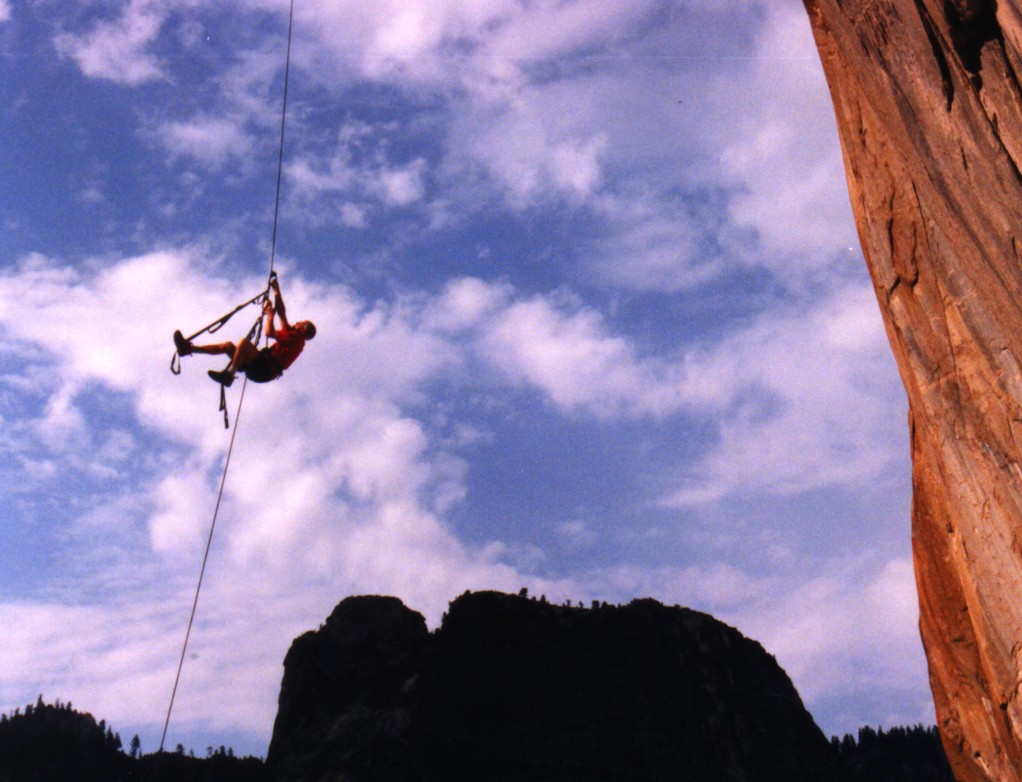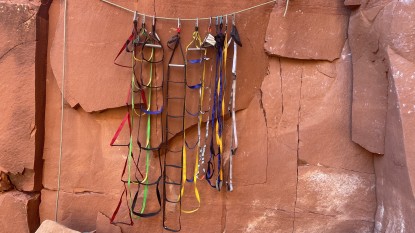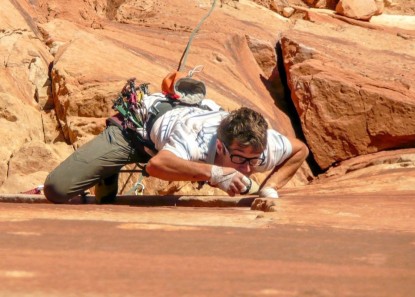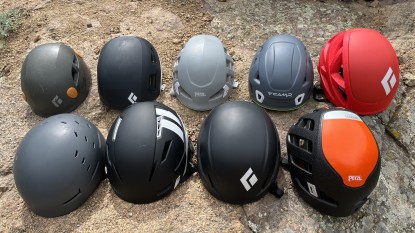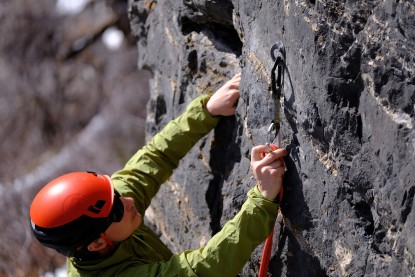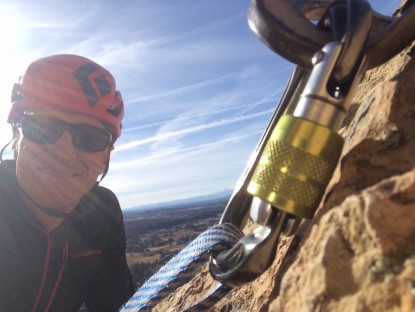Looking for a new ascender for your next vertical adventure? Our team has decades of big wall and rescue experience and has tested over 20 of the best ascenders side-by-side. This comprehensive review compares 13 of today's top options, offering you expert advice on which one is best for different situations. Our team field tested all of these products, climbing big walls in Yosemite and Zion, using them for rescue training on glaciers, and as top-rope solo devices at crags. We examine key components, like how easily an ascender slides and clips, how much it weighs, and how versatile it is for multiple uses. Whether you're seeking a mechanical model to clean routes on a big wall or a lightweight option for glacier travel and crevasse rescue, our in-depth review has you covered.
Editor's Note: We recently repurchased and retested all of the ascenders in our lineup and updated this review on May 21, 2024, to highlight new award winners.
Our Picks of Ascenders
Best Overall Ascender
Black Diamond Index
| Rope Diameter | 8-13 mm |
|---|---|
| Measured Weight (grams) | 207 |
| Style of Device | Handled |
| Applications | Ascending |
| Multiple Clip-In Points? | Yes, plus a small one for cord or quicklink |
Even though it's our favorite, we do think that this ascender could be improved in a few ways. Firstly, it's not the lightest fully handled ascender – even though big walling is hardly an ultralight endeavor, each ounce adds up on a full wall rack. If weight is a major concern, we suggest the Petzl Ascension, one of the lighter handled ascenders on the market. While some other handled ascenders have space for multiple carabiners, the Index has only one carabiner hole and one quick-link hole at the bottom of the handle. Being able to clip ladders and a tether to the bottom of the ascender is convenient and avoids the chain of carabiners you often end up with in big wall systems. These critiques aside, we love how well the Index ascends a rope and particularly appreciate the ability to manipulate it with either hand easily.
Best Bang for Your Buck
Petzl Tibloc
| Rope Diameter | 8-11 mm |
|---|---|
| Measured Weight (grams) | 34 |
| Style of Device | Capture Pulley |
| Applications | Emergency ascending, hauling |
| Multiple Clip-In Points? | Hole for keeper cord |
While the Tibloc is incredibly useful, there are some downsides. It's reliant on a round-stock carabiner to effectively bite the rope – the skinnier the rope, the more important the thickness of the carabiner becomes. If you are working with a skinnier rope, it helps to “set” the Tibloc before weighting it to avoid it shuddering down your rope, causing minor (though always unnerving) sheath wear. Of course, you can always sidestep these issues by opting for a capture pulley designed for small-diameter ropes, like the Edelrid Spoc. Since the Tibloc is entirely dependent on the accompanying carabiner for a handle, keep in mind that there's no real way to grab the device while ascending. However, as an ultralight device you can always carry for use in a pinch, the Petzl Tibloc is a no-brainer.
Our Favorite Basic Ascender
Petzl Basic
| Rope Diameter | 8-11 mm |
|---|---|
| Measured Weight (grams) | 87 |
| Style of Device | Basic |
| Applications | Hand or chest ascender |
| Multiple Clip-In Points? | Yes |
While they might not be specifically marketed as such, handleless models are commonly used as chest ascenders when clipped into a chest harness. The Basic works decently well in this way. But usually, the shorter the device, the more comfortable it is in this capacity – a device like the Kong Futura Body is going to be a better option if you're looking specifically for a chest ascender. And for long days of wall following and cleaning, we'd recommend a handled model, like the Edelrid Hand Cruiser, for comfort. But for lightweight missions that only include some jugging and hauling, the Petzl Basic is an excellent option.
Most Versatile Device
Petzl Micro Traxion
| Rope Diameter | 8-11 mm |
|---|---|
| Measured Weight (grams) | 79 |
| Style of Device | Capture Pulley |
| Applications | Ascending, hauling, toprope soloing |
| Multiple Clip-In Points? | Hole for keeper cord |
When using the Micro Traxion as a hand ascender, our testers tended to grab the carabiner clipped to the device. Although this “works”, it sure isn't the most comfortable way to ascend a rope. Even though the lockout button is flush on the frame, it is still easy to pop open if you're grabbing this device directly – if you're going to be doing a lot of jugging, we'd suggest a hand ascender, like the Index, instead of relying on a capture pulley device like this one. While our testers found tons of uses for the Micro Traxion – including as part of a fix-and-follow method for efficient climbing – even we admit that it's expensive. While it's not our favorite as a dedicated ascender, it's easily one of our most used tools on our harnesses.
An Innovative Ascender for Photographers
Climbing Technology Quick Roll
| Rope Diameter | 8-13 mm |
|---|---|
| Measured Weight (grams) | 261 |
| Style of Device | Handled |
| Applications | Ascending, hauling |
| Multiple Clip-In Points? | Yes |
But because of this added pulley feature, the Quick Roll is somewhat cumbersome compared to other handled ascenders, even compared to similarly heavy ones like the Grivel A&D. This design is also not nearly as versatile as other ascenders we tested, so we wouldn't necessarily recommend it for everyone. However, if you're specifically looking for a setup to quickly switch back and forth between ascending to descending, then the Quick Roll is certainly a tool worth considering.
Compare Products
How We Tested
We tested each of these ascenders while climbing thousands of vertical feet of rock on famous routes like The Nose on El Capitan in Yosemite and Moonlight Buttress in Zion. We used them on fast-and-free ascents, on multi-day big wall sieges, practicing our systems at our local crags, and even to help develop new climbing routes. Through the combination of real-world testing and close examination – based on decades of combined experience – we evaluated each model according to a set of key metrics that we consider when selecting a new ascender.
Our testing of ascenders is divided into five performance metrics:- Ease of Sliding (30% of overall score weighting)
- Clipping (25% weighting)
- Versatility (20% weighting)
- Weight (15% weighting)
- Comfort (10% weighting)
Why Trust GearLab
Chris McNamara, Steven Tata, and Ethan Newman tested these ascenders primarily for big wall and rescue applications. Chris has completed over 70 ascents of El Capitan, while Steven has climbed El Cap a comparably small – but still wildly impressive – nine times. Ethan primarily climbs in Zion, where he has established a number of grade V big wall climbs. All three are experts at self-rescue with extensive experience climbing all over the world.
Analysis and Testing Results
Unlike a harness or shoes – where you can assess sizing and fit in a store – there is no easy way to test ascenders short of purchasing or borrowing them. It takes some practice to adjust to each different model, and while all of them are easy to use after some time, each is handy for a particular application. It is helpful to consider the opinions of experienced climbers who climb in similar terrain rather than make a judgment based on marketing claims alone. Our expert team purchased, field-tested, and examined each of these ascenders based on an objective set of metrics. After extensive testing, we are confident that this review of ascenders is the most comprehensive one available.
What's the Best Value?
Like many pieces of specialty climbing gear, ascenders are expensive. We want to ensure that we're purchasing the right piece for the job and that that piece of gear is designed to last us for years of adventure. While we closely examine key performance metrics, we also take into consideration versatility and overall value. While sometimes the best gear is the most expensive, when it comes to specialty gear, that's often not the case. Our overall favorite handled ascender, the BD Index, is less expensive than directly comparable models. On climbs other than big wall ascents, we're often carrying an ascender as an emergency backup. As one of the smallest, lightest weight, least expensive, and most utilitarian options on the market, there's really no reason not to carry a Petzl Tibloc. While it's far from our favorite ascender, even a low-scoring option like the Wild Country Ropeman 2 is worthy of your consideration, especially if you're just looking to carry an ascender as a backup.
Ease of Sliding Up the Rope
Big wall climbing is a battle of attrition, with each inefficiency adding up over each foot gained up the wall. The less efficient an ascender slides, the more tired you'll become, and the less likely success is as an outcome. If the ascender slides up the rope easily, you'll move faster, use less energy, and travel upwards more efficiently.
Our assessment of this metric is largely based on using these ascenders while climbing, but we also wanted to back up our experience with a more objective measurement. Ascenders typically have an easier time sliding up ropes under tension, so we progressively weighted the same rope by adding carabiners to the bottom until the ascender slid up without also lifting the rope and carabiners.
Of all the devices we tested, the BD Index and Edelrid Hand Cruiser performed the best, smoothly ascending with only a lightweight locking carabiner at the end of the rope. All of the devices in our review were able to easily slide with three big lockers – a total weight of 246 grams (approximately 0.5 pounds) – or less. The notable exception was the Ropeman 2, which has a hellaciously strong spring and took a full ten carabiners – 820 grams (1.8 pounds) – tied to the end of the rope before it would slide without friction.
Clipping On and Off a Rope
No ascender is intuitive to use at first; it takes practice to be able to quickly clip them on and off the rope. Handled ascenders traditionally feature a comfortable thumb lever on the cams that enables convenient one-handed operation, while the easiest models include a trigger that you can use with your index finger. Basic ascenders and capture pulleys often require two hands and take much more practice to clip and unclip with just one hand.
We also like devices that include a keeper loop or some other means of keeping it clipped to something when removing it from the rope. Dropping gear on a big wall can be catastrophic to your efforts and dangerous to other parties below. To test each ascender's ease of use, we simply clipped and unclipped each ascender many times over the course of a climb.
All of the handled ascenders scored well in this metric, but the Index is a bit easier to use than the others. While all handled ascenders are designed as right- or left-handed, the Index can easily be unclipped with either hand, regardless of orientation. Out of the handleless options, the Petzl Basic is the easiest to use one-handed and you can keep a carabiner on it while clipping and unclipping. The Kong Futura Body and CAMP Solo 2 also worked reasonably well for the same reasons. Even though progress-capture pulleys like the Climbing Technology Roll n' Lock and Edelrid Spoc generally require two hands to operate, we were at least able to unclip them while the cams were still clamped to the rope.
One thing we did like about the Petzl Tibloc and Micro Traxion is that they have small holes specifically designed for 2mm keeper cords to help prevent dropping the devices – the Ropeman 2 has a pull wire on the cam that serves the same purpose. Even though the Spoc doesn't include a dedicated hole, it does have several places where you could easily attach a keeper cord without interfering with the device. While these details may seem small, these touches prove to us that these devices have been thoughtfully designed by experienced climbers and rescuers.
Versatility
While we intend to use these devices primarily as ascenders, there are only so many tools one can take up a big wall, so versatile devices are extra handy. Many of these devices can be applied in a wide variety of applications, including ascending, hauling, self-belaying, and more. The more ways one can practically use one of these ascenders, the higher the score.
The Petzl Micro Traxion is at the top of our list as a true Jack-of-all-trades. Not only can you use it for a wide variety of applications, but it performs reasonably well in all of them. It never slips as an ascender, it hauls comfortably, and it works well as one of your two top-rope solo devices. While we greatly appreciate the similar versatility of the Roll n' Lock, this device only works well with certain carabiners.
Hauling With an Ascender
Ascenders – basic-style ones, in particular – can be incredibly useful to use in big wall hauling systems. As described in the now-famous Chongo 2:1 system, we prefer ones with a slightly shorter frame, like the CAMP Solo 2, to lengthen the throw of a haul setup.
Interestingly, the Grivel A&D includes a unique slot in the frame of the device to be used as a rappel plate. It's mostly designed for mountaineering expeditions up fixed ropes, as the rappel plate feature doesn't create enough friction for a vertical rappel, even with multiple lockers. While not exactly ideal for big wall climbing, it would be very useful on a snow slope. The “A&D” in the name stands for “ascend and descend”, as the Grivel A&D is one of the few handled models we tested that is specifically designed for descending fixed ropes.
Weight
Weight is not a significant factor when choosing an ascender for big wall climbing – we're hauling enough gear as it is – but it can play a larger role in choosing one to leave on your harness for self-rescue applications. Capture pulleys are particularly helpful for ascending a rope or setting up a rescue system in an emergency. We weighed each ascender straight out of the box to confirm manufacturer claims.
The Petzl Tibloc is far and away the lightest, most compact device we tested – it is almost half the weight of the next lightest ascender. It's the one we never really notice hanging off the back of our harnesses, and we often keep it clipped with a prussik loop and knife. The Edelrid Spoc is also impressively lightweight and a little more versatile relative to its weight. As far as fully-handled ascenders, the Petzl Ascension is quite light compared to similar models and might be a good pick for alpine walls where a mix of features and weight is paramount.
Comfort
Since big wall terrain is inhospitable and often uncomfortable, small differences – like the comfort of a handle – can make a big difference in climbing performance over a multi-day ascent. After climbing thousands of vertical feet with these devices, we're confident in our assessment of which designs cause hot spots or any other uncomfortable straining of our hands.
Obviously, the handled ascenders are the most comfortable to use, but the Edelrid Hand Cruiser really lives up to its name. Not only is the handle comfortable, but the angle at which the ascender grabs the rope puts it in a far more ergonomic placement than other comparable devices. Additionally, the folded metal on top creates another very comfortable hand position that easily allows for two-handed use of a single ascender or changing grips to avoid blisters. If it fits your hand well, the Petzl Ascension's index finger horn is great. But otherwise, it uncomfortably separates your fingers, which is what some of our testers experienced.
For non-handled models, the Petzl Basic is a comfortable, compact ascender. The molded plastic part of the housing fits comfortably in our palms, which was a nice break from other full-metal designs. With the CAMP Solo 2 and the Kong Futura, we had to be very careful how we grabbed the device so as not to accidentally disengage the cam, which was a bit worrying and less comfortable for more than one reason. Most of the emergency ascenders and progress-capture pulleys are too small to grab – rather, we tend to hold onto the carabiner that is clipped to the device, which isn't particularly comfortable for more than a single pitch.
Conclusion
Although they will all get you up a rope, each ascender we cover in this review fills a unique niche. Ascenders are crucial tools for big wall climbing applications and can be very helpful for recreational climbing, where you may need to self-rescue in the event of an accident. Handled ascenders are invaluable for moving up fixed lines and are a massive step up from the traditionally used friction hitches. Basic ascenders can be called upon for myriad uses, as can small capture pulleys, which are particularly useful to always carry in case of an emergency. From glaciers to big walls, as you continue to develop your rope work, undoubtedly, you will find more than one use for a top-quality ascender.
—Ethan Newman, Steven Tata & Chris McNamara




